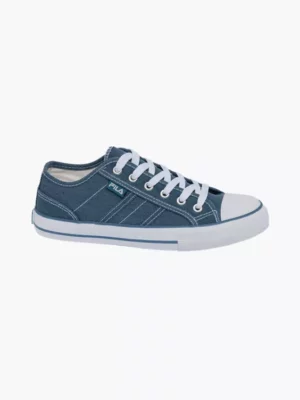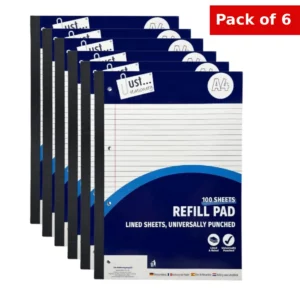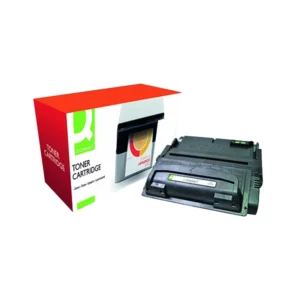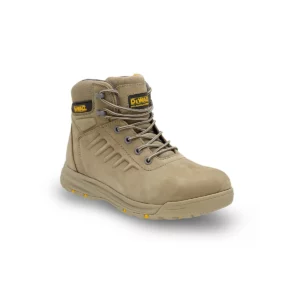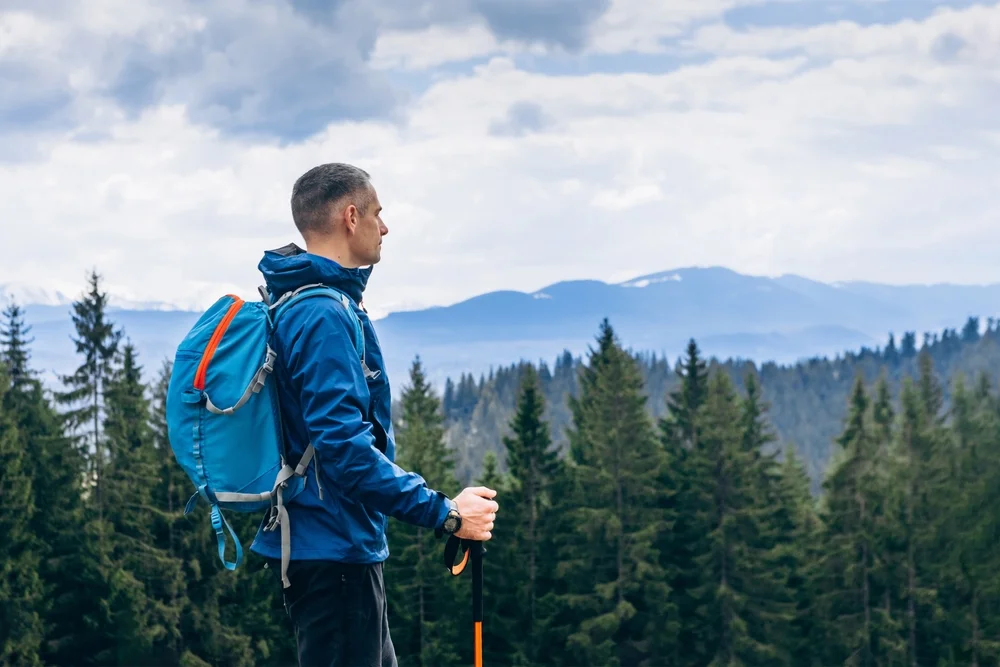
Hiking is a fantastic way to explore nature, stay active, and enjoy the great outdoors. However, to fully enjoy your adventures, it’s essential to keep your hiking gear in top condition. Whether you’re trekking up mountains or walking forest trails, well-maintained gear can make a world of difference in comfort, safety, and durability. This guide offers simple, easy-to-understand tips for taking care of your hiking equipment, so it lasts longer and performs better.
Why Maintaining Your Hiking Gear is Important
Hiking gear is an investment, and if you look after it, it will serve you for years. Good quality gear, from boots to backpacks, can be expensive, but it’s worth the cost when cared for properly. Proper maintenance:
- Saves money: You won’t need to replace items frequently.
- Increases safety: Clean, well-maintained gear functions better.
- Improves performance: Gear works as intended, providing comfort and support.
1. Hiking Boots: Keeping Your Feet Happy
Your boots are one of the most important pieces of hiking equipment. If they’re not properly maintained, they can wear out quickly or cause discomfort during hikes.
Cleaning Your Boots
After every hike, make sure to clean your boots thoroughly:
- Remove dirt and mud: Use a brush to get rid of loose dirt and mud.
- Wash with water: If the boots are particularly dirty, use warm water and a soft brush to scrub them clean. Avoid using strong soaps or detergents as these can damage the materials.
- Dry properly: Never leave your boots in direct sunlight or near a heat source, as this can cause the material to crack. Instead, let them dry at room temperature with the insoles removed.
Waterproofing Your Boots
Waterproofing helps to keep your feet dry and prolongs the life of your boots. Most boots come pre-treated with waterproof coatings, but this needs to be reapplied over time.
- Apply a waterproofing treatment: Products like sprays or waxes are available to protect your boots. Follow the manufacturer’s instructions carefully.
- Regularly check for leaks: Pay attention to any areas where water might seep in and treat them promptly.
For a more detailed look at hiking boots, you can explore this Hiking Boots: A Buyer’s Guide.
| Task | How Often | Why It’s Important |
|---|---|---|
| Clean after each hike | After every use | Prevents mud and dirt from damaging materials |
| Dry at room temperature | After each cleaning | Prevents cracking and keeps boots in good shape |
| Waterproof boots | Every few months or when needed | Maintains water resistance and extends lifespan |
| Inspect for damage | Before each hike | Helps identify wear and tear to avoid discomfort |
2. Backpacks: Caring for Your Load Carrier
Your backpack carries all your essentials, so keeping it in good shape is crucial.
Cleaning Your Backpack
- Empty the backpack: Shake it out to remove any dirt or debris.
- Hand wash with warm water: Use mild soap and a sponge to clean the inside and outside. Avoid machine washing, as it can damage the fabric and straps.
- Dry completely: Hang the backpack to dry, making sure all pockets are open to allow air circulation.
Zipper Maintenance
Zippers can get clogged with dirt, making them difficult to open and close. Use a small brush to clean around the zipper and apply a special zipper lubricant to keep them working smoothly.
3. Clothing: Staying Dry and Comfortable
Your hiking clothes are designed to protect you from the elements, whether that’s rain, wind, or cold. Proper care can keep them in good condition and extend their lifespan.
Washing Hiking Clothes
- Follow care instructions: Always check the washing label on your hiking clothes. Most require cold water washing and air drying.
- Avoid fabric softeners: Fabric softeners can clog up moisture-wicking materials and reduce their effectiveness.
- Re-waterproof jackets: Over time, waterproof jackets can lose their water-repelling abilities. You can restore this by using a waterproofing spray or wash-in product.
4. Tents: Your Home in the Wild
Tents are another key part of your hiking kit. A well-maintained tent provides shelter from the elements and should be kept clean and dry after every use.
| Care Step | How to Do It | Importance |
|---|---|---|
| Wash gently | Use a front-loading washing machine with mild detergent | Prevents damage to insulation |
| Air dry | Lay flat or use a tumble dryer on low heat | Keeps the sleeping bag fluffy and warm |
| Store loosely | Avoid storing in a tight compression sack | Prevents loss of insulation loft |
| Keep dry | Ensure the sleeping bag is completely dry before storage | Prevents mould growth |
Cleaning Your Tent
- Remove dirt and debris: Use a soft brush or sponge to clean off any dirt from the tent.
- Hand wash with cold water: Avoid using harsh detergents. A gentle cleaner specifically designed for outdoor gear works best.
- Dry completely before storing: A wet tent can grow mould or mildew if stored improperly.
Tent Zippers and Poles
- Check zippers: Make sure they open and close easily. Clean them with a soft brush and lubricate if necessary.
- Inspect poles: Check for any cracks or damage in the poles and repair them immediately to avoid issues during your next trip.
Storing Your Tent
- Store in a cool, dry place: Keeping your tent stored in a clean, dry area will prevent damage.
- Avoid compression: Don’t store your tent tightly packed for long periods. This can wear out the fabric. Store it loosely to allow air to circulate.
5. Sleeping Bags: Keeping Warm at Night
Your sleeping bag is essential for a good night’s sleep while hiking. Proper care keeps it clean, fresh, and warm.
Washing Your Sleeping Bag
- Use a gentle detergent: Wash your sleeping bag by hand or in a front-loading washing machine using a mild detergent designed for outdoor gear.
- Air dry: Sleeping bags can take a long time to dry. Lay them flat in a cool, dry area, or use a tumble dryer on a low heat setting with a few tennis balls to help fluff up the insulation.
Storing Your Sleeping Bag
- Store loosely: Avoid keeping your sleeping bag tightly packed in its compression sack. Instead, store it loosely in a larger bag to help it maintain its loft.
- Keep it dry: Always make sure your sleeping bag is completely dry before storing to prevent mildew.
6. Hiking Poles: Support and Stability
Hiking poles help with balance and reduce strain on your knees, especially on uneven terrain. Proper care will keep them sturdy and reliable.
Cleaning and Maintaining Hiking Poles
- Remove dirt after every hike: Use a damp cloth to wipe down your hiking poles after each trip.
- Check locking mechanisms: Make sure the locking mechanisms are working smoothly and tighten them if necessary.
- Inspect the tips: The tips of your hiking poles can wear down after repeated use. Check them regularly and replace them if they start to show signs of wear.
7. Hydration Systems: Staying Hydrated on the Go
Hydration systems, like water bottles and hydration packs, are essential for staying hydrated during long hikes.
| Step | How to Do It | Why It’s Important |
|---|---|---|
| Empty the backpack | Remove all items and shake out dirt | Prevents dirt from building up |
| Hand wash | Use warm water and mild soap | Protects fabric from harsh chemicals |
| Dry completely | Hang the backpack with open pockets | Prevents mould and mildew |
| Check zippers | Clean and lubricate zippers | Keeps them functioning smoothly |
Cleaning Hydration Packs
- Rinse after every use: After every hike, rinse out the bladder and tube with warm water.
- Use a cleaning kit: Hydration packs can grow mould if not properly cleaned. Use a cleaning kit to scrub the inside of the bladder and the drinking tube.
- Dry thoroughly: Make sure the bladder and tube are completely dry before storing to prevent the growth of bacteria.
For further insight into outdoor essentials, check out OEX Men’s Verge Mid Waterproof Hiking Boots: Your Ultimate Outdoor Companion.
8. General Gear Storage Tips
Proper storage of all your hiking gear is essential for long-term care.
Clean Before Storing
Always clean your gear before storing it. Dirt, moisture, and grime can cause items to deteriorate over time.
Store in a Cool, Dry Place
Avoid storing gear in hot, humid areas like garages or attics, as heat and moisture can damage fabrics, leather, and other materials.
Use Gear Organisers
Gear organisers help keep everything in one place and easy to find. Labelled boxes or shelves can help you keep your equipment in order.
9. Repairing Damaged Gear
Even with the best care, gear can sometimes get damaged. Knowing how to repair your hiking equipment can save you from having to replace it.
- Patch up tears: Use a repair kit to patch up holes in your tent, backpack, or clothing.
- Fix broken zippers: Zippers can often be repaired with a small pair of pliers to realign the teeth.
- Replace worn parts: Hiking poles, water bottles, and other gear may need small parts replaced over time, like tips, straps, or lids.
For additional advice on outdoor products, check out these eco-friendly options in Top 10 Eco-Friendly Products for Sustainable Living.
Conclusion
Maintaining your hiking gear is key to ensuring it lasts for many adventures and performs at its best. By regularly cleaning, repairing, and storing your gear properly, you’ll enjoy comfortable, safe hikes without the need to constantly replace items. Whether it’s your boots, backpack, or tent, following these simple tips will keep everything in great condition, ready for your next outdoor journey. Happy hiking.
-
Product on sale
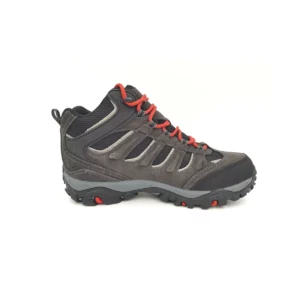 OEX Men’s Verge Mid Waterproof Walking Hiking Trekking charcoal BootsOriginal price was: £129.99.£44.99Current price is: £44.99.
OEX Men’s Verge Mid Waterproof Walking Hiking Trekking charcoal BootsOriginal price was: £129.99.£44.99Current price is: £44.99. -
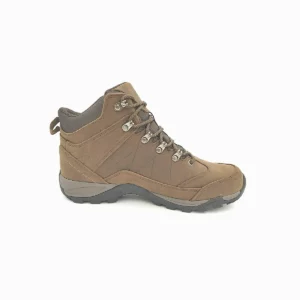 North Ridge LUXOR 2 MID Men’s Waterproof Walking Boots£48.99
North Ridge LUXOR 2 MID Men’s Waterproof Walking Boots£48.99 -
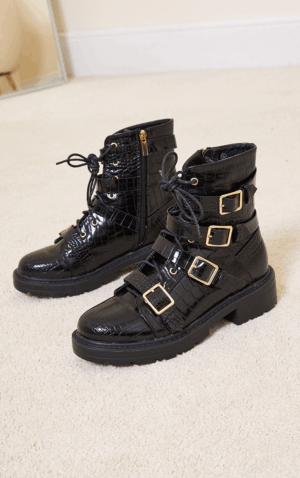 Black PU Croc Gold Eyelet Lace-Up Ankle Boots£24.89
Black PU Croc Gold Eyelet Lace-Up Ankle Boots£24.89
| Task | How to Do It | Benefits |
|---|---|---|
| Clean dirt and debris | Brush off dirt with a soft sponge | Prevents damage to tent fabric |
| Dry before storing | Hang the tent in a dry, shaded area | Prevents mould and mildew |
| Inspect poles and seams | Check for cracks or loose seams | Avoids surprises during the next trip |
| Re-waterproof the tent | Use a waterproofing spray on the outer layer | Maintains weather resistance |

